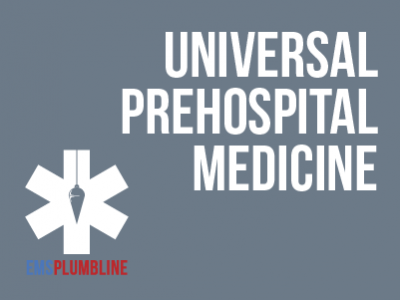 |
CERT Unit 1: Disaster Preparedness |
1.00 |
The Community Emergency Response Team (CERT) program educates volunteers about disaster preparedness for the hazards that may occur where they live. This course covers the functions of CERT and how CERT fits into your community's emergency preparedness structure. The types of hazards that can affect communities and the hazard's potential to impact people, health, and infrastructure are discussed in this course. In addition, this course also will teach you how to face a potential disaster.
It is just one of many health and safety courses we offer. This course will help you learn the best practices for keeping yourself safe and healthy when on the job. |
 |
Zoonotic Disease and Biosecurity |
2.00 |
Every year, zoological organizations are faced by new challenges in maintaining the health of their animal collections. Zoonosis, or disease that can be spread between species, forms one of the greatest threats to the safety of animals, guests, and keepers. Using a case study from a zoonotic disease concern at the San Diego Zoo, you will learn the basics of zoonotic disease identification and prevention, including standard record keeping, best practices, health and safety protocols for keepers, and the understanding of how disease can be spread. |
 |
Planificación de Carrera y Salario (Spanish) Career Planning and Salary |
1.00 |
En este curso, aprenderemos consejos sobre cómo descubrir sus necesidades profesionales, explorar diferentes opciones profesionales, investigar salarios, adquirir habilidades laborales esenciales y cómo planificar su carrera.
In this course, we'll learn tips on how to discover your career needs, explore different career options, research salaries, gain essential job skills, and how to plan your career. |
 |
Project Management Essentials: Activities and Dependencies |
0.75 |
This course will focus on how to identify project activities and recognize the types of project activities and the categories of dependencies and dependency relationships, analyze activities by creating an activity analysis form, and estimate the time duration and cost of project activities. |
 |
Infectious Diseases: Causes and Symptoms |
1.00 |
An infectious disease is an illness that is caused by organisms such as bacteria, viruses, fungi, and parasites. Many of these organisms live in or on our bodies, and are normally harmless. But under certain circumstances, they can cause disease.
Course Learning Objectives:
- Describe infectious disease, and the ways in which germs that can cause infectious disease are spread.
- Identify common symptoms of infectious diseases, and why young children are vulnerable to infectious diseases. |
 |
Communicating with the Deaf Sign Language User |
1.00 |
This training was developed by Dr. Jason Rotoli, Deaf Health Pathways Director, University of Rochester School of Medicine and Dentistry in conjunction with Dr. Jeremy Cushman, Chief of the University of Rochester’s Division of Prehospital Medicine. Funding for the Care of the Culturally Deaf education was provided by Society of Academic Emergency Medicine. Continuing Education provided by EMSPlumbline
Final Exam: This multiple-choice exam is designed to test your knowledge of the material you just reviewed. You have three attempts to gain an 80% or higher on this exam. Please take your time and answer each question carefully. |
 |
Leading with Head and Heart |
2.00 |
Those in leadership positions have a responsibility to both lead and manage.During this course, participants will understand the differences between the leadership and management, and the steps we can take to cultivate both. Participants will explore how leaders create safe, supportive environments by modeling self-awareness, interpersonal skills and growth mindset in how we lead and manage. |
 |
Expedition Ocean: Module 1 Teacher Version |
1.00 |
|
 |
Food Allergy Basics in Early Childhood (CDA 1 and 5) |
3.00 |
Welcome to Food Allergy Basics in Early Childhood. This course is focused on ways to prevent accidental exposure to foods that can cause an allergic reaction. You will be able to describe ways to prevent accidental exposure to foods that cause an allergic reaction. You will also be able to demonstrate how to read a food label to reduce the risk of accidental exposure to foods that can cause an allergic reaction. In addition, you will learn how to use a Food Allergy and Anaphylaxis Emergency Care Plan to care for a child with a food allergy and identify the symptoms and triggers of food allergies. This course is also designed to be part of a Child Development Associate (CDA) Credential™ curriculum. It covers Subject Area 1: Planning a Safe, Healthy Environment to Invite Learning and Subject Area 5: Managing an Effective Program Operation. |
 |
Egress, Fire Prevention, & Fire Protection |
0.65 |
In this course, participants will learn about escape routes and exits, emergency action plans, fire prevention plans, fires, fire extinguishers, and workplace fire prevention tips. |











